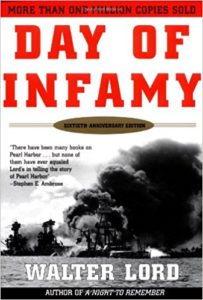WW II Pacific (1 of 4)
Books arranged chronologically by event beginning with general period overviews
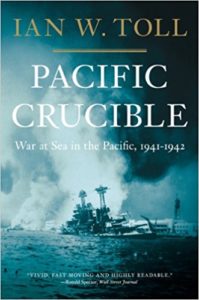
Pacific Crucible: World War II at Sea in the Pacific, 1941-1942,
by Ian W. Toll (2012 - 656pp)
The best current overview of the first 18 months of WW II. Japan's military expansion, Pearl Harbor and their cataclysmic loss of 4 carriers at Midway.
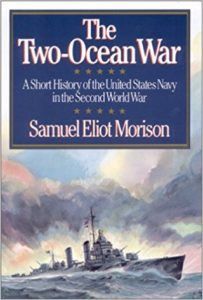 The Two Ocean War: A Short History of the Unites States Navy in the Second World War, by Samuel Elliot Morrison (1963 - 611pp)
The Two Ocean War: A Short History of the Unites States Navy in the Second World War, by Samuel Elliot Morrison (1963 - 611pp)
Still the definitive work on U.S. Navy ops during WW II. Excellent overviews of the personalities, strategies, defeats and victories in the Pacific, Atlantic and Med. Great maps.
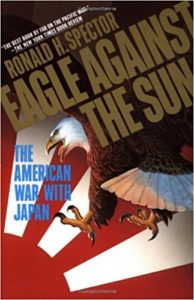
Eagle Against the Sun, by Ronald Spector (1985 - 624pp)
Very readable, 1 vol high level look at the entire Pacific war from both the U.S and Japanese sides. Personalities of military greats, major battles.
Timeless 1957 classic of Pearl Harbor based on 577 eye-witness interviews. Still the best, most dramatic and concise coverage of this infamous day. (1957 - 288pp)
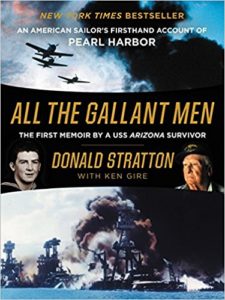 All the Gallant Men, by Donald Stratton (2017 - 320 pp)
All the Gallant Men, by Donald Stratton (2017 - 320 pp)
One of the most remarkable accounts of the devastation aboard the USS Arizona (BB-39) during the attack at Pearl Harbor and the fight for survival of the remainder of its crew.
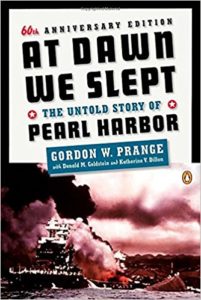 At Dawn We Slept, by Gordon Prange (1991 - 912pp)
At Dawn We Slept, by Gordon Prange (1991 - 912pp)
Easily, the most comprehensive, detailed, objective work on Pearl Harbor...prewar politics with Japan, military impact and later internal fallout.
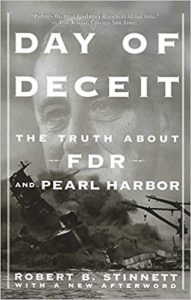 Day of Deceit, the Truth About FDR and Peal Harbor,
Day of Deceit, the Truth About FDR and Peal Harbor,
by Robert Stinnett (2001 - 415pp)
The definitive conspiracy theory with regard to Pearl Harbor that ties up all the loose ends. Yes, FDR cleverly baited the trap, and the Japanese sprung it to their ever loving regret.
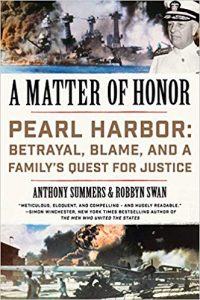 A Matter of Honor: Pearl Harbor - Betrayal, Blame & a Family's Quest for Justice, by Anthony Sommers and Robbyn Swan (2017 - 570pp)
A Matter of Honor: Pearl Harbor - Betrayal, Blame & a Family's Quest for Justice, by Anthony Sommers and Robbyn Swan (2017 - 570pp)
What did FDR know and when did he know it. That is the central question of this important book that attempts to exonerate Adm Husband Kimmel who took the blame for the U.S. defeat at Pearl Harbor
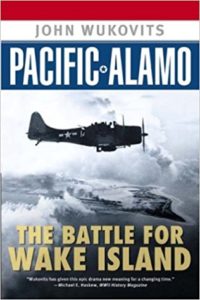
Pacific Alamo, by John Wukovitz (2004 - 320pp)
Gritty, heroic story of one the U.S. military's finest hours. Wake's defenders refused surrender, bought time after Pearl, decimated Japanese invaders.
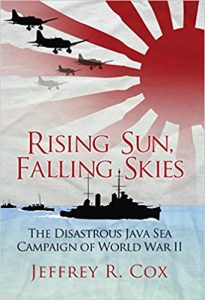 Rising Sun, Falling Skies: The Disastrous Java Sea Campaign, by Jeffrey Cox ( 2015 - 440 pp)
Rising Sun, Falling Skies: The Disastrous Java Sea Campaign, by Jeffrey Cox ( 2015 - 440 pp)
Isolated in the Far East after the loss of Singapore, then Borneo, Java and Sumatra, the Allied Navy was reeling before the Japanese onlslaught. The Battle of the Java Sea was the first naval action of the war in the Pacific and included the Battle of the Sundra Straight where the Allies lost several British ships and the U.S the cruiser USS Houston.
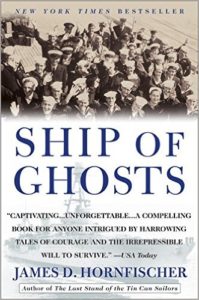
Ship of Ghosts, by James Hornfischer (2007 - 544)
Gripping story of the battle of the Java Sea, heroic crew of the USS Houston, flagship of the Asiatic fleet which was sunk and crew imprisoned in S.E. Asia.
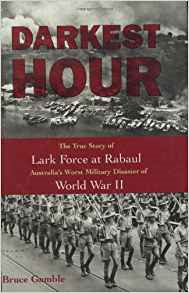
Darkest Hour: The True Story of Lark force at Rabaul, by Bruce Gamble
(2006 - 304pp)
One of the most gripping, tragic stories of the war of 1500 men and 6 nurses of the Aussie garrison at Rabual captured by the Japanese.
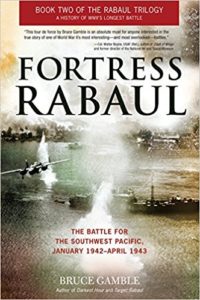 Fortress Rabaul, by Bruce Gamble (2010 - 416pp)
Fortress Rabaul, by Bruce Gamble (2010 - 416pp)
The main Japanese stronghold in the S.E. Pacific after its capture from a small Aussie force, Rabaul was an ongoing strategic problem for the U.S.
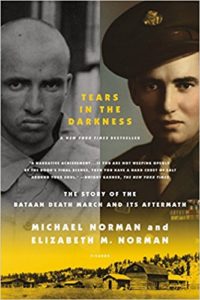
Tears in the Darkness: The True Story of the Bataan Death March, Michael Norman (2010 - 496pp)
Heartrending, very human story of the brutal treatment by the Japanese, removal to labor camps on the mainland, post-war guilt of many Japanese guards.
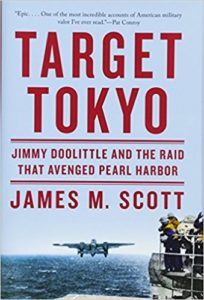
Target Tokyo: Jimmy Doolittle and the Raid on Tokyo, James M Scott( 2015, Apr - 672pp)
Harvard Nieman Fellow Scott puts the famed Doolittle raid in a marvelously entertaining broad context based on new documents and intro's to a cast of WW II characters
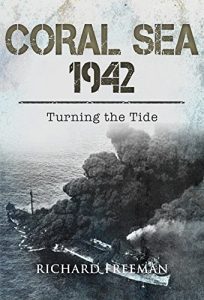 Coral Sea 1942: Turning the Tide, By Richard Freeman (2019 - 120 pp)
Coral Sea 1942: Turning the Tide, By Richard Freeman (2019 - 120 pp)
Concise, pithy account of the famed Battle of the Coral Sea, and the impact it had on the later Battle of Midway. If you want the facts, here they are emphasizing the fact that this was the first if the worlds only carrier battle...and first where key combatants never saw each other.
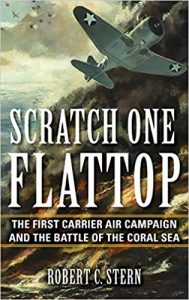 Scratch One Flattop: The Battle of the Coral Sea, by Robert Stern (2019 - 328pp)
Scratch One Flattop: The Battle of the Coral Sea, by Robert Stern (2019 - 328pp)
Blow by blow recounting of the famous Battle of the Coral Sea which halted the Japanese advance on Australia and sowed the seeds their cataclysmic defeat at Midway. "Scratch One Flattop" was the message sent back to Fletcher after the sinking of the Kyoshu...and became a popular board game back in the U.S.
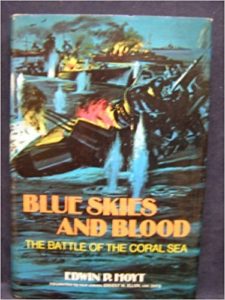
Blue Skies and Blood, by Edwin M. Hoyt (1975 - 340pp)
The U.S lost the carrier Lexington, but halted a Japanese advance on Australia and sank two carriers contributing to their disaster at Midway.
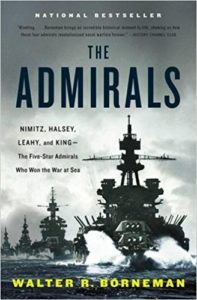
The Admirals, by Walter Bornemen (2013 - 608 pp)
Exceptional naval history of the American Admirals who helped win the war in the Pacific. Great vignettes about these larger than life figures who risked all for god and country.
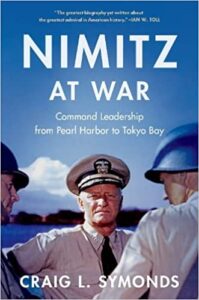 Nimitz at War, Command Leadership from Pearl Harbor to Tokyo, by Craig Symonds (2022 - 466 pp)
Nimitz at War, Command Leadership from Pearl Harbor to Tokyo, by Craig Symonds (2022 - 466 pp)
Chester Nimitz was the great American Admiral that guided the U.S. Pacific Fleet to victory during WW II. His quiet leadership style inspired all around him and was responsible for many of America's victories. From the Battle of Midway to Guadalcanal and the many victories across the Pacific, Nimitz was unflappable and earned the respect of all.
 Valor: The Astonishing WW II Saga of One Man's Defiance and Indomitable Spirit, by Dan Hampton (2022 - 341 pp).
Valor: The Astonishing WW II Saga of One Man's Defiance and Indomitable Spirit, by Dan Hampton (2022 - 341 pp).
When Lt Bill Harris joined the Marines in 1939, it was to fight. Instead, he spent the next 5 years escaping from the Japanese in the Philippines, finally sailing to Morotai in New Guinea. Ultimately, betrayed and captured, he spent the last 6 month of the War in a Japanese prison camp on Honshu. This excellent book, captures the historic moments of WW II in the Pacific and tells the story of one man's desire to be free and re-enter the war as a combat soldier.
Click Here to Continue to WW II - Pacific (2 of 4)

